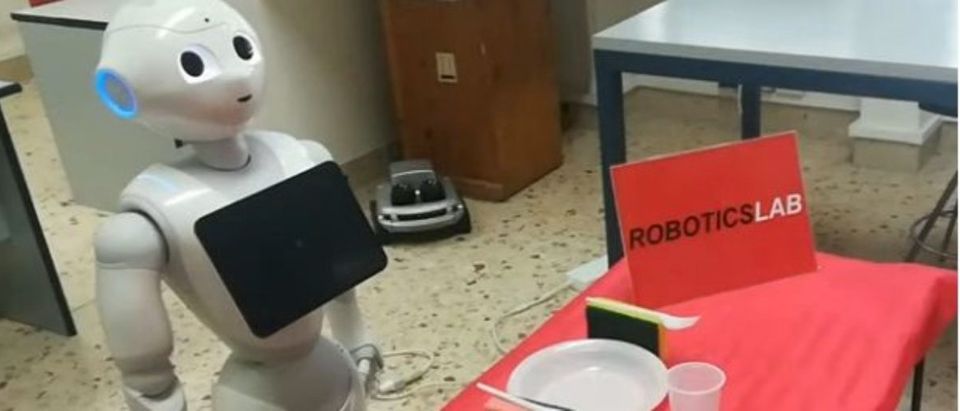Italian researchers programmed a robot that is able to “think out loud,” and describe its thought process to humans for a research study that compared the “functional” and “moral” restrictions of the robot’s interaction.
Pepper the robot, which was created by Softbank Robotics, and programmed by researchers from the University of Palermo, can articulate its thoughts and decision-making process, as well as explain why certain movements aren’t able to be executed, The Guardian reported.
“There is a link between inner speech and subconsciousness [in humans], so we wanted to investigate this link in a robot,” explained Arianna Pipitone, the lead author of the research study.
Study explores inner life of AI with robot that ‘thinks’ out loud https://t.co/FhSI5u7ptK
— The Guardian (@guardian) April 21, 2021
Upon instruction from the researchers to place a napkin in the wrong spot on a table, Pepper began speaking out loud to itself and stating that this was not correct based on the rules of etiquette and that the human giving the instructions was “confused.” (RELATED: Panasonic Releases Robot To Cuddle With, Talk To While Isolated In Pandemic)
Pepper completed tasks more efficiently when programmed to think aloud and explain its decision-making process to the researchers, compared to when it was not thinking aloud, according to the research.
“Of course, there are many other situations where this kind of technology could be annoying,” explained Antonio Chella, author of the study and professor of robotics from the University of Palermo. “So, for example, if I give a precise command: ‘Alexa, turn off the light,’ inner speech may be not so useful, because I want the robot to just obey my command.”
“Maybe … one day there will be a robot that spontaneously generates speech,” Chella added.
Researchers from the University of Alabama announced that they were working on creating robots that would work alongside police officers and facilitate communication between other police, crime suspects, and the public.
“We are hoping that our human interactive robots will make a safe environment by distancing civilians and officers from dangerous situations,” explained the head of mechanical engineering at the University of Alabama, Dr. Nader Jalili.


